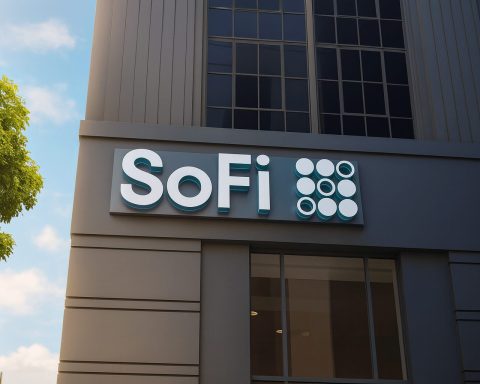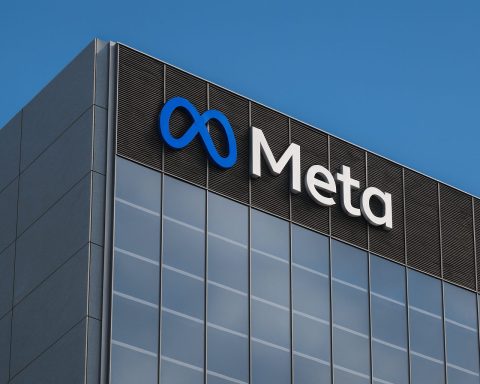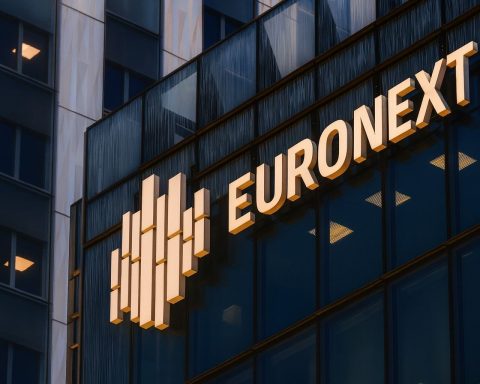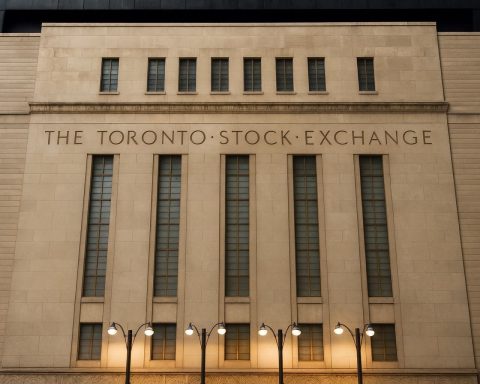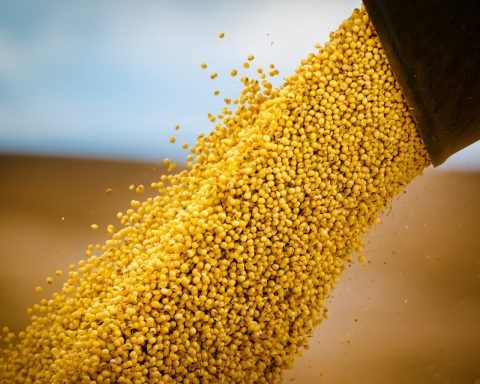- The United States is expected to cut its general tariff on Swiss goods from 39% to 15% in early December, reversing a painful hike imposed in August. [1]
- In exchange, Switzerland has pledged $200 billion in investment in the US by 2028 and granted duty‑free quotas for American beef, bison and poultry. [2]
- Farmers and consumers worry about hormone‑treated beef and “chlorinated chicken”, but Swiss rules on hormones, chlorine rinses, labelling and import quotas remain strict. [3]
- The Swiss National Bank and many economists say the tariff cut is welcome but will only directly affect a small slice of exports – roughly 4%. [4]
- New pieces of the story today (24 November) include: fresh clarification from Economy Minister Guy Parmelin on the December timeline, and news that aircraft maker Pilatus has secured a special 0% US tariff under a revived 1979 civil‑aircraft agreement. [5]
1. What exactly did Switzerland and the US agree?
At the heart of the row is a general US tariff that former President Donald Trump raised to 39% on almost all Swiss imports on 1 August 2025 – the highest rate applied to any European country. [6]
On 14 November, Bern and Washington announced a framework trade agreement that:
- cuts the general US tariff on Swiss goods to 15% (in line with tariffs applied to EU exports),
- caps future “national security” tariffs on key sectors like pharmaceuticals and semiconductors at 15%, and
- commits Swiss firms to invest $200 billion in the United States by the end of 2028, with at least $67 billion arriving in 2026. [7]
In return, Switzerland agreed to:
- reduce its own tariffs on a range of US industrial products, chemicals, nuts, fruit, fish and seafood, and
- grant duty‑free tariff quotas for selected US meats. [8]
The deal is still a non‑binding memorandum of understanding. It must be converted into a formal agreement, approved by the Swiss parliament and potentially tested at the ballot box in a referendum – all standard steps in Switzerland’s system of direct democracy. [9]
2. Timeline: When will the 15% tariff actually start?
This is where the 24 November 2025 updates matter.
Economy Minister Guy Parmelin told Swiss media that Switzerland is essentially ready to apply the new rate, but the US side still needs time to reprogram customs systems. He has repeatedly pointed to a delay of 10–12 working days from the November 14 announcement, meaning the cut should arrive in early December if everything goes smoothly. [10]
In an interview summarised today by agricultural newspaper Schweizer Bauer, Parmelin said he “hopes for a reduction in US tariffs from the beginning of December”, stressing that:
- the current agreement is “realpolitik” for a small export‑oriented country,
- the text is still just a declaration of intent, and
- Bern will try to secure additional exemptions and carve‑outs during the next negotiation round. [11]
The Swiss National Bank (SNB) is already factoring the change into its outlook. SNB president Martin Schlegel reiterated over the weekend that the move is “helpful but not a game changer” because the 39% tariff only ever affected about 4% of Swiss exports, mostly machinery and other industrial goods; big pharma was largely shielded. [12]
3. Meat quotas, hormone beef and chlorinated chicken – what changes?
The most politically explosive part of the package is not watch parts or machine tools – it is meat.
The new US meat quotas
Under the framework deal, Switzerland will grant the US duty‑free bilateral quotas for: [13]
- 500 tonnes of beef (almost double the 261 tonnes imported from the US in 2024),
- 1,000 tonnes of bison meat, and
- 1,500 tonnes of poultry per year.
A Swissinfo agribusiness explainer notes that these 3,000 tonnes in total are still small compared to Switzerland’s overall meat market:
- In 2024, the country imported just over 100,000 tonnes of meat – mainly from Germany and Austria –
- while domestic farms produced about 450,000 tonnes. [14]
In other words, even if all US quotas were fully used, American meat would represent only a few percent of total Swiss meat imports and an even smaller share of consumption.
Hormone‑treated beef
The headline worry – seen in both Swiss and international coverage – is “cheap hormone‑filled beef” from the US. [15]
Key facts:
- Hormone use: Swissinfo cites estimates that two‑thirds to 90% of conventionally raised US beef cattle receive hormone implants or growth regulators in feedlots. [16]
- Swiss rules: Switzerland bans the use of growth hormones in domestic livestock. Imports of hormone‑treated beef are allowed only with mandatory labelling, and retailers must clearly flag such products. [17]
- Consumer behaviour: Swiss meat industry representatives say labelled hormone beef already exists on the market – but volumes have actually fallen in recent years, from around 800 tonnes to about 250 tonnes, as shoppers opt for hormone‑free meat. [18]
So the deal may slightly expand the potential supply of hormone‑treated beef, but does not change Switzerland’s ban on using hormones in domestic production or its labelling rules.
“Chlorinated chicken” fears
The other flashpoint is US poultry treated with chlorine rinses, a practice banned in both Switzerland and the EU.
Le News reports that:
- Farmers’ leader Markus Ritter insists the ban on chlorinated chicken must remain.
- Parmelin has floated the idea of a small 1,500‑tonne quota of US poultry with strict labelling, similar to the rules for hormone‑treated beef, arguing that consumers should be able to choose. [19]
Swissinfo’s farming explainer stresses that chlorine‑washed chicken is explicitly banned under Swiss non‑tariff food‑safety rules and that the industry intends to keep it that way. [20]
Why “flooded supermarkets” are unlikely
Michel Darbellay, deputy director of the Swiss Farmers’ Union, says talk of supermarkets being “inundated” with US meat is exaggerated. [21]
His arguments:
- The 3,000 tonnes of US meat allowed duty‑free are tiny compared with existing imports and domestic output.
- Switzerland operates a tight import‑quota system: low tariffs apply only within a limited quota linked to domestic slaughter numbers; once those quotas are full, much higher “over‑quota” tariffs kick in.
- Provided the US quotas are integrated inside the existing system (rather than added on top), the overall pressure on Swiss farmers should not dramatically increase. [22]
However, the exact way these US quotas will sit within Switzerland’s tariff‑quota regime is still not fully clarified, which is one reason farm groups and opposition parties are keeping up the pressure.
4. Swiss farmers: between relief and resistance
Swiss agriculture is reacting in two very different tones – sometimes within the same organisation.
Relief for dairy and cheese exporters
For dairy producers, the trade deal is a lifeline.
- Swiss cheese exports to the US plunged more than 50% after the 39% tariff took effect, hitting flagships like Gruyère particularly hard. [23]
- Darbellay of the Farmers’ Union calls the tariff cut “a relief” for cheese and chocolate exporters, arguing that keeping shelf space in US supermarkets is crucial for the long‑term health of the sector. [24]
One farmer‑MP told Swiss public TV that, for Gruyère producers, going from 39% back down to 15% is “still a tax, but already much better” than the shock they suffered this summer. [25]
Fears about meat and long‑term pressure
On the other hand, Markus Ritter, president of the Swiss Farmers’ Association, is leading calls for extra protection. In remarks quoted by SRF and Le News, he: [26]
- acknowledges the political logic of the deal and the need for “realpolitik” with Washington,
- insists that Swiss agriculture must not be the loser of the bargain, and
- demands structural and investment aid to help farms modernise and withstand higher foreign competition.
Ritter also highlights a broader worry: when you add this US deal to concessions made in the Mercosur talks and other free‑trade agreements, Swiss agriculture feels squeezed from many sides at once. [27]
A very subsidised sector
Le News reminds readers that Swiss farmers already operate in one of the most heavily subsidised systems in the OECD: in Switzerland, Iceland, Norway and Korea, between 40% and 49% of farm income comes from public support. [28]
That makes every trade‑policy concession politically sensitive. Consumers pay for protection both at the till (through higher prices) and through their taxes. The new US quotas will inevitably re‑ignite that debate.
5. Today’s twist: Pilatus gets a 0% tariff
While most exporters are waiting for the 15% ceiling to kick in, one high‑profile company has already landed something better: zero.
Business paper Handelszeitung and Le News report that Pilatus, the Nidwalden‑based aircraft manufacturer, has regained full duty‑free access to the US market. [29]
What happened?
- In 2025, Washington had suspended the 1979 Agreement on Trade in Civil Aircraft, which commits signatories to zero tariffs on civil aircraft, parts and components.
- As part of the new understanding, the US has now reactivated that agreement for Switzerland and South Korea, restoring 0% duties on Pilatus aircraft and spare parts. [30]
- About 40% of Pilatus planes are sold into the US, so the move significantly improves its competitive position compared with other Swiss exporters still facing tariffs. [31]
Pilatus itself is publicly low‑key, thanking the Swiss government and the US administration for the “initial agreement” but avoiding any triumphal tone – perhaps aware that other sectors are still lobbying hard just to get down to 15%.
6. How big is the macroeconomic impact?
From a macro view, both the Swiss National Bank and most analysts see the agreement as stabilising but not transformative.
- Only around 4% of Swiss exports were ever hit by the 39% tariff; pharmaceuticals – by far the largest export category – were exempt or protected by separate caps. [32]
- Many firms front‑loaded shipments to the US ahead of the August hike, then slowed exports while waiting for a resolution. That pattern is now likely to reverse again as the 15% rate comes into sight. [33]
- SNB chief Schlegel warns that US trade policy remains a major source of uncertainty, even with this deal, and that companies will stay cautious about future tariff shocks. [34]
In short, the move removes a self‑inflicted headwind but does not fundamentally change the structure of the Swiss economy.
7. Politics: “Deal with the devil” or necessary realpolitik?
Domestically, the debate is fierce.
Supporters’ case
Parmelin argues Switzerland “hasn’t sold its soul to the devil”, saying the framework is a pragmatic way to defuse a trade war that threatened thousands of jobs and long‑term investment plans. [35]
Business groups broadly back him:
- Industrial associations welcome finally having the same tariff level as EU competitors in the US market. [36]
- Export‑heavy sectors like machinery, watches and specialty chemicals see the 15% cap as a floor they can plan around, rather than an unpredictable political weapon.
Critics’ concerns
Opposition parties, especially the Greens, call the package a “surrender agreement”, arguing that Bern:
- prioritized corporate interests and wealthy exporters over farmers and consumers,
- conceded too much on meat and food safety, and
- allowed business elites unusual access to sensitive negotiations. [37]
Media commentary in Switzerland has been largely relieved but wary: happy to see the 39% tariff go, but critical of the high price in investment pledges and concessions on agriculture. [38]
8. What to watch next
As of 24 November 2025, here are the key open questions:
- Implementation date
- Does the US really manage to plug the new 15% rate into customs systems by early December, or do administrative delays drag this into 2026? [39]
- How meat quotas are integrated
- Will the 3,000 tonnes of US meat be counted within Switzerland’s existing low‑tariff quotas, as farm leaders hope, or on top of them, which would increase pressure on domestic producers? [40]
- Non‑tariff rules and labelling
- Parliament and regulators will need to confirm how hormone labelling is enforced and whether there is any movement at all on chlorinated chicken. For now, both remain tightly restricted. [41]
- Parliamentary and possible referendum fight
- Opposition parties and farm groups are already preparing their arguments. Given Switzerland’s tradition of referendums on major international treaties, a popular vote on the final tariff agreement is a real possibility. [42]
- Follow‑on sector deals
- Pilatus’s 0% tariff shows that sector‑specific carve‑outs are on the table. Other industries may now push for similar treatment, particularly where legacy trade agreements (like the civil‑aircraft pact) can be revived. [43]
Bottom line
For Switzerland, the US tariff deal is neither a catastrophic surrender nor a glorious victory. It is, in Parmelin’s own words, realpolitik: a compromise that trades investment promises and limited meat concessions for restoring more predictable access to a crucial export market.
Swiss farmers will still wake up tomorrow with the same mountains, the same cows – and the same structural pressures from global markets. But the immediate fear of a prolonged 39% US tariff shock is fading, and the real battle is shifting to how the fine print on meat quotas, labelling and subsidies is written in Bern over the coming months.
References
1. www.reuters.com, 2. www.reuters.com, 3. www.swissinfo.ch, 4. www.reuters.com, 5. www.schweizerbauer.ch, 6. www.swissinfo.ch, 7. www.reuters.com, 8. www.reuters.com, 9. www.reuters.com, 10. www.reuters.com, 11. www.schweizerbauer.ch, 12. www.reuters.com, 13. www.reuters.com, 14. www.swissinfo.ch, 15. www.swissinfo.ch, 16. www.swissinfo.ch, 17. www.swissinfo.ch, 18. lenews.ch, 19. lenews.ch, 20. www.swissinfo.ch, 21. www.swissinfo.ch, 22. www.swissinfo.ch, 23. www.swissinfo.ch, 24. www.swissinfo.ch, 25. www.swissinfo.ch, 26. lenews.ch, 27. www.swissinfo.ch, 28. lenews.ch, 29. www.handelszeitung.ch, 30. www.handelszeitung.ch, 31. lenews.ch, 32. www.reuters.com, 33. www.reuters.com, 34. www.trend.at, 35. www.reuters.com, 36. www.reuters.com, 37. www.reuters.com, 38. www.swissinfo.ch, 39. www.reuters.com, 40. www.swissinfo.ch, 41. www.swissinfo.ch, 42. www.reuters.com, 43. www.handelszeitung.ch

